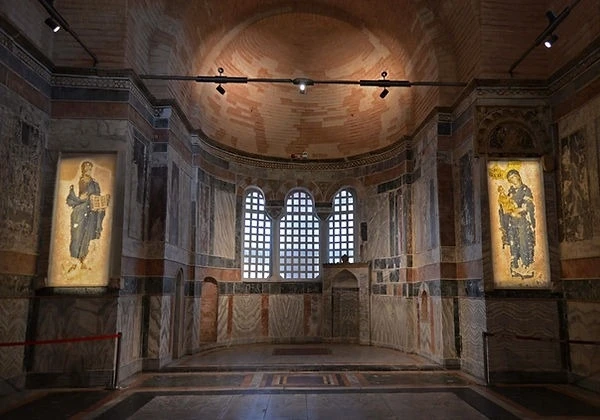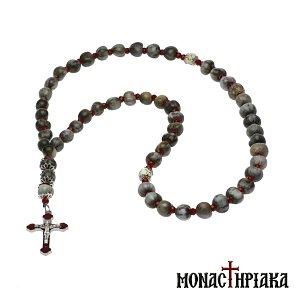In Constantinople is located the ‘Monastery of Chora’ (or Khora), as it is named, dedicated to our Lord Jesus Christ. According to tradition, the monastery took its name from the area where it was built, which was called Chora/Khora and lay outside the walls of Constantinople.

When the monastery's cathedral was built
The monastery's cathedral was built upon an older structure, approximately between 1077 and 1081, by Maria Doukaina, who was the mother-in-law of Emperor Alexios I Komnenos. In 1120, Alexios' son, the sebastokrator Isaac Komnenos, carried out a complete restoration of the church.
During the years 1316 and 1321 AD, Theodore Metochites, a venerable Logothete of the General under Andronikos II Palaiologos and a scholar with significant literary writings, undertook the renovation of the church. He added the southern chapel, covering all expenses himself and adorned the church with mosaics and mural paintings.

The great mosaic icons of the Monastery
At the entrance of the church is placed the mosaic icon of Jesus Christ known as ‘The Land of the Living’ or else called 'Τhe Dwelling Place (chora) of the Living'. Proceeding towards the main sanctuary, we encounter the mosaic icon of the Virgin Mary known as 'Land of non Land’ or 'The Dwelling Place of the Uncontainable'.

How are the names of the mosaics connected

The names that were given to these two mosaic icons carry deeper meanings. The designation 'The Dwelling Place of the Uncontainable' stems from the miraculous event of the Divine Incarnation of Jesus Christ by the Virgin Mary.
The interpretation of the 'The Dwelling Place of the Uncontainable' is only perceptible in conjunction with the name given to the icon of Jesus Christ, namely the 'The Dwelling Place of the Living'. This name likely has a biblical origin, as it is encountered in certain quotes of the Psalms: «...Yet I am confident I will see the Lord’s goodness while I am here in the land of the living...».
Therefore, The Dwelling Place of the Living is Jesus Christ Himself through His incarnation by Theotokos. This is the saving event in which the Theotokos accommodated Jesus Christ as the Dwelling Place of the Uncontainable so that afterward the Messiah could accommodate the whole world as the Dwelling Place of the Living.
The Monastery of Chora in Constantinople today
Today, the Monastery of Chora in Constantinople is open as a museum. It stands as one of the most notable monuments of the Palaiologan era. Thanks to its unique iconography, it has become one of the most remarkable places of Byzantine art with high level of artistic value.







Images from: thebyzantinelegacy.com















